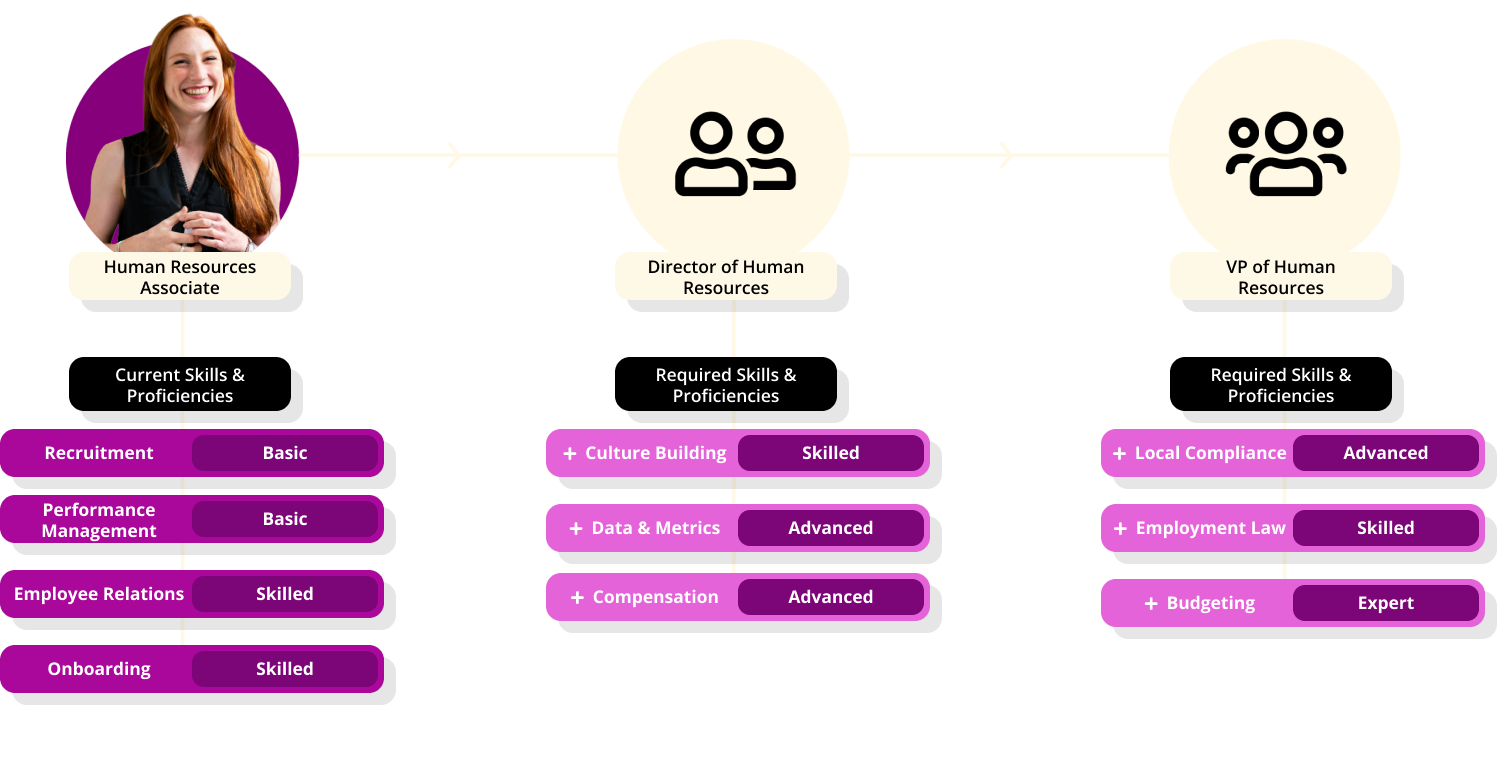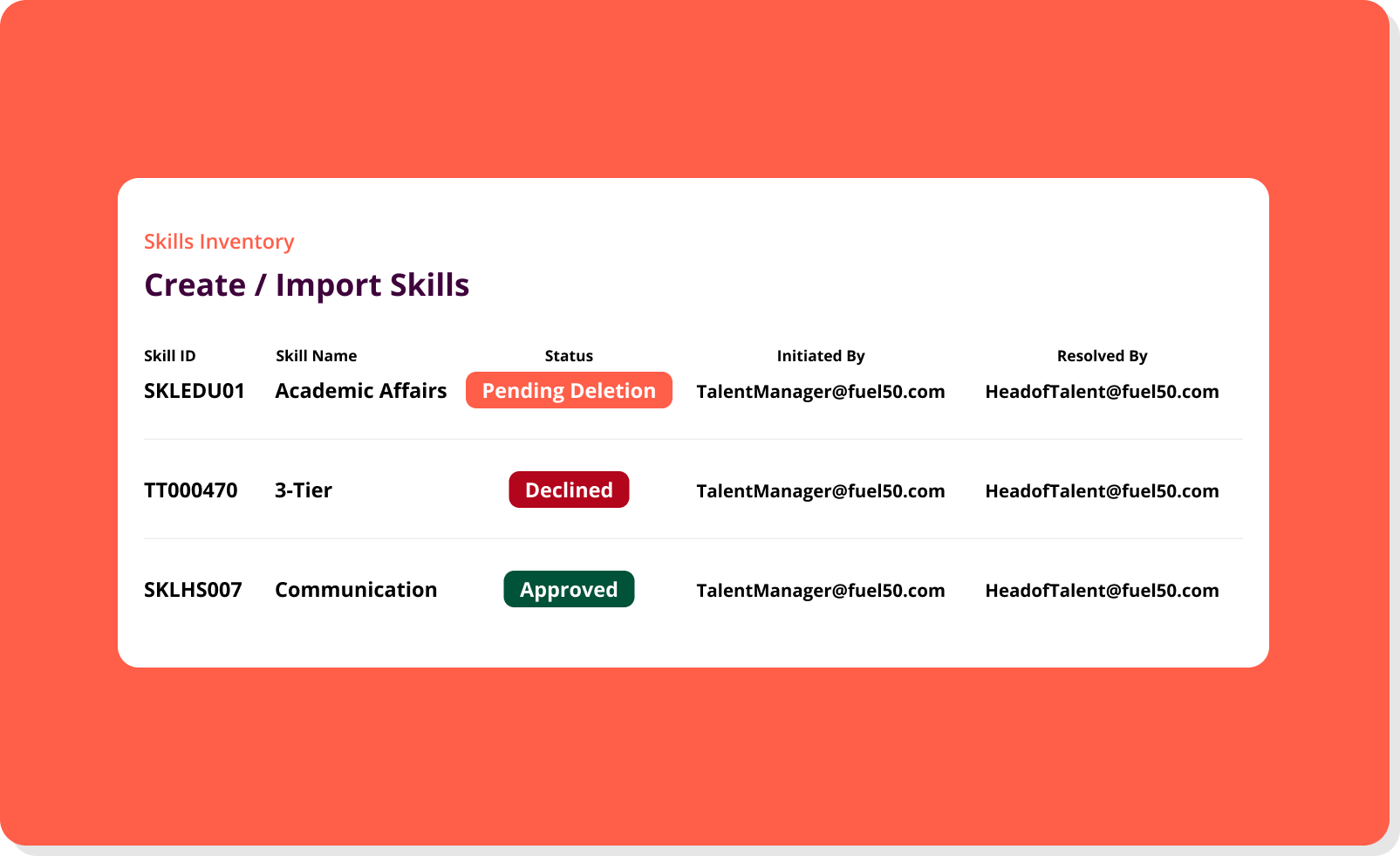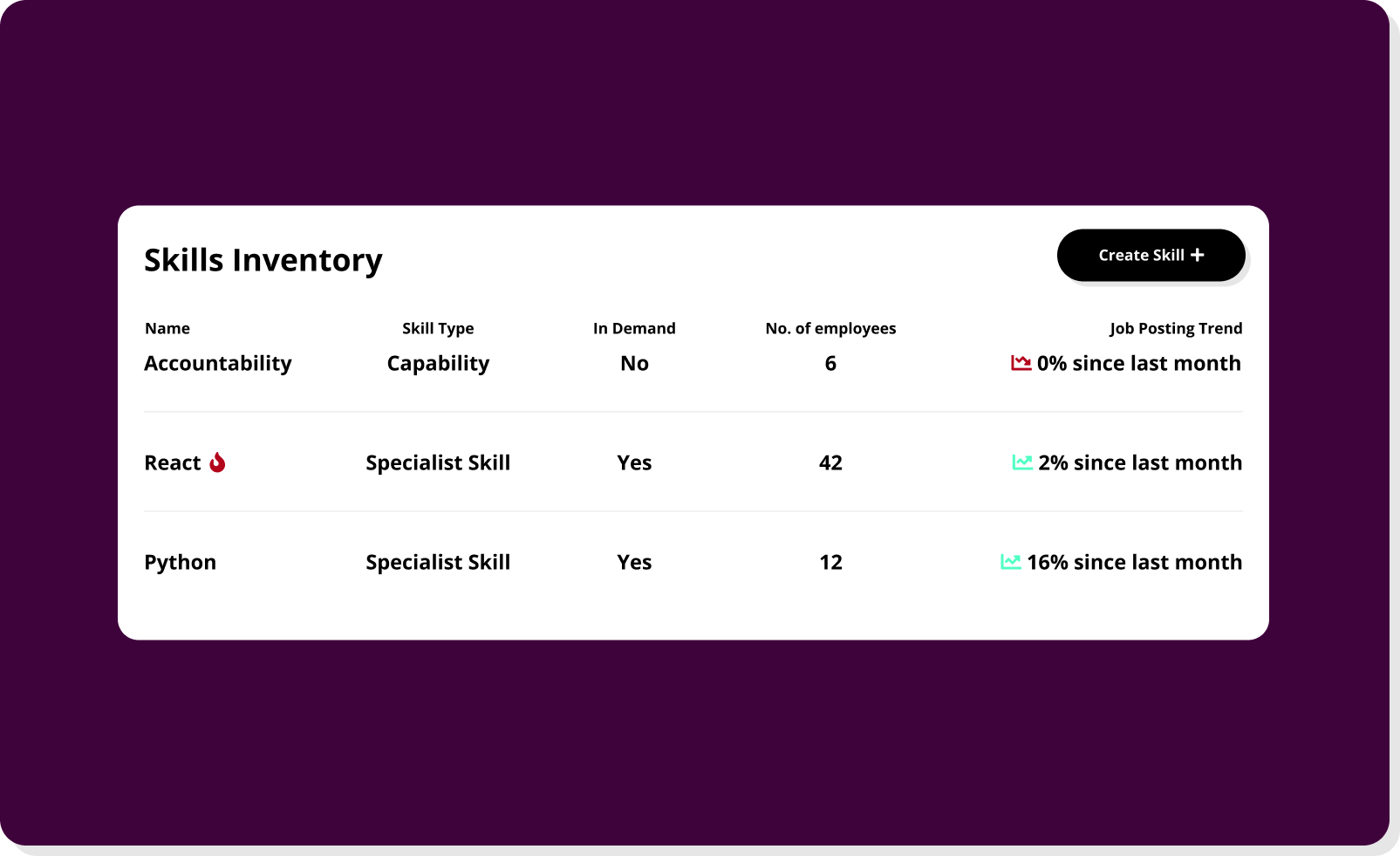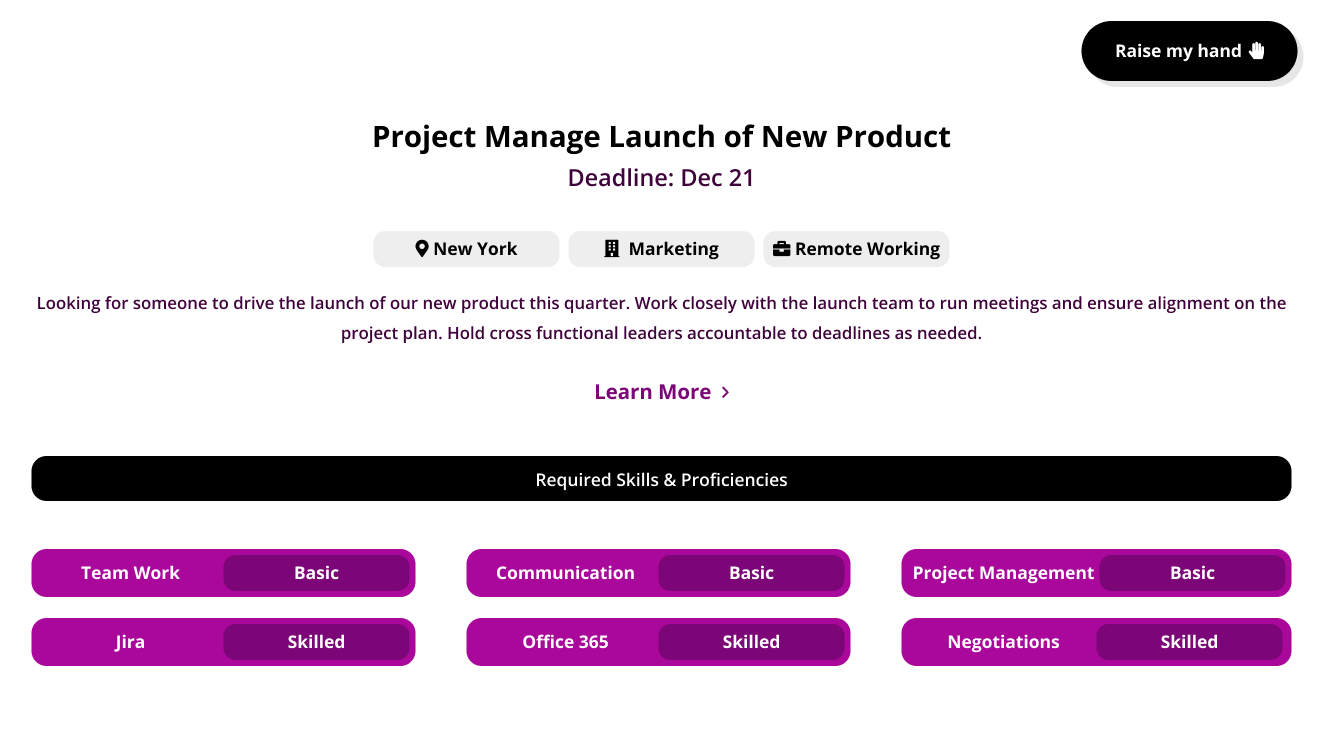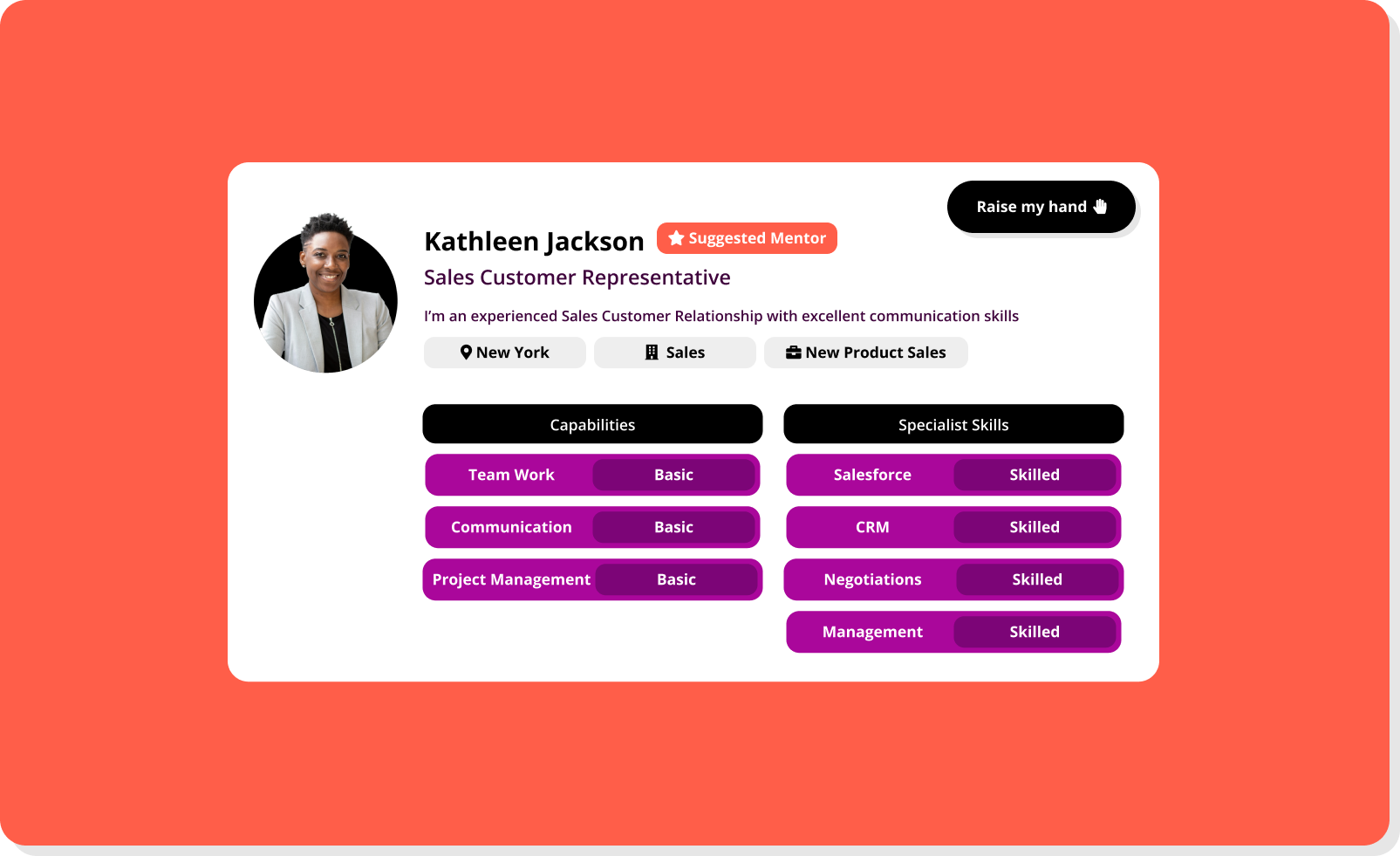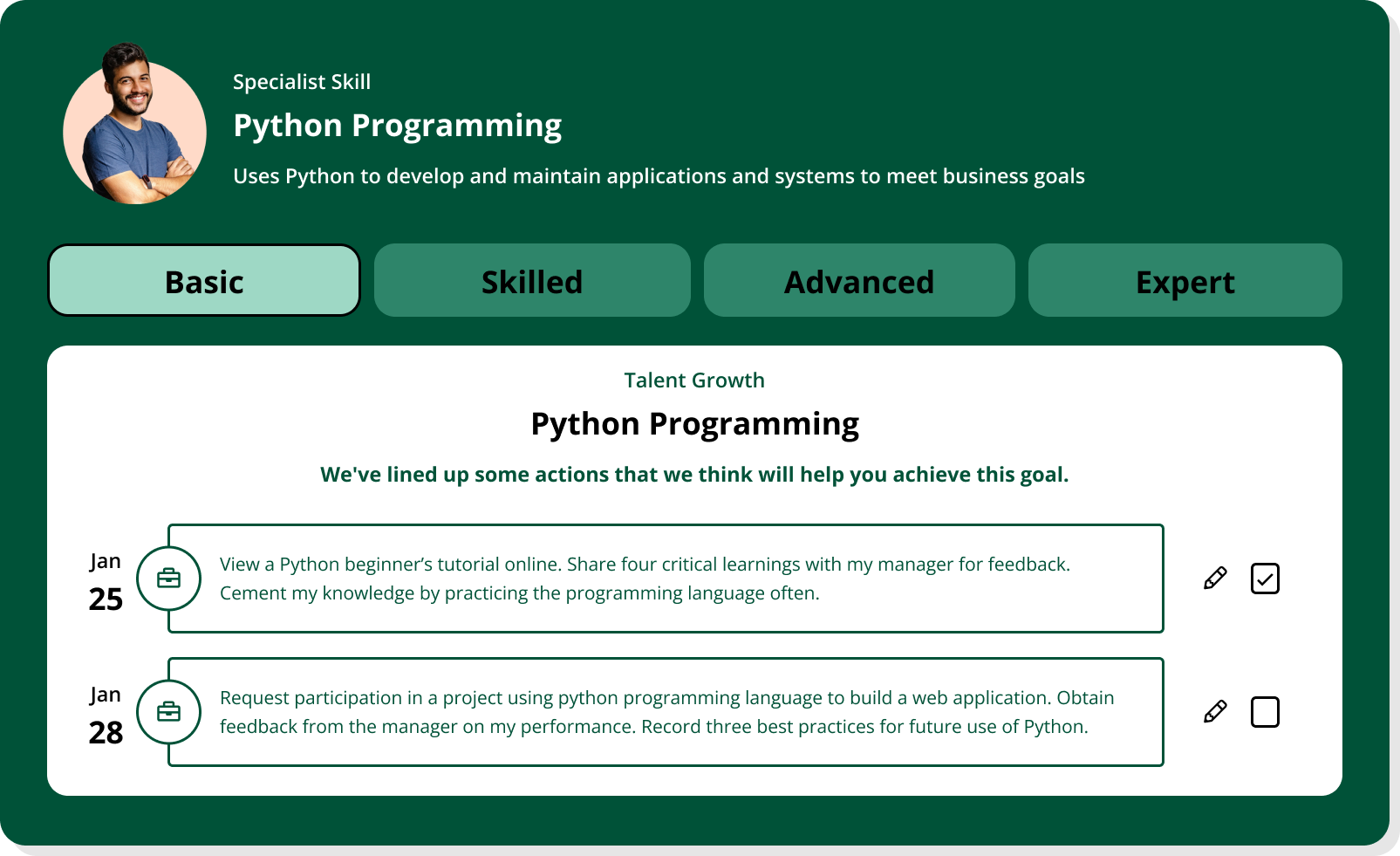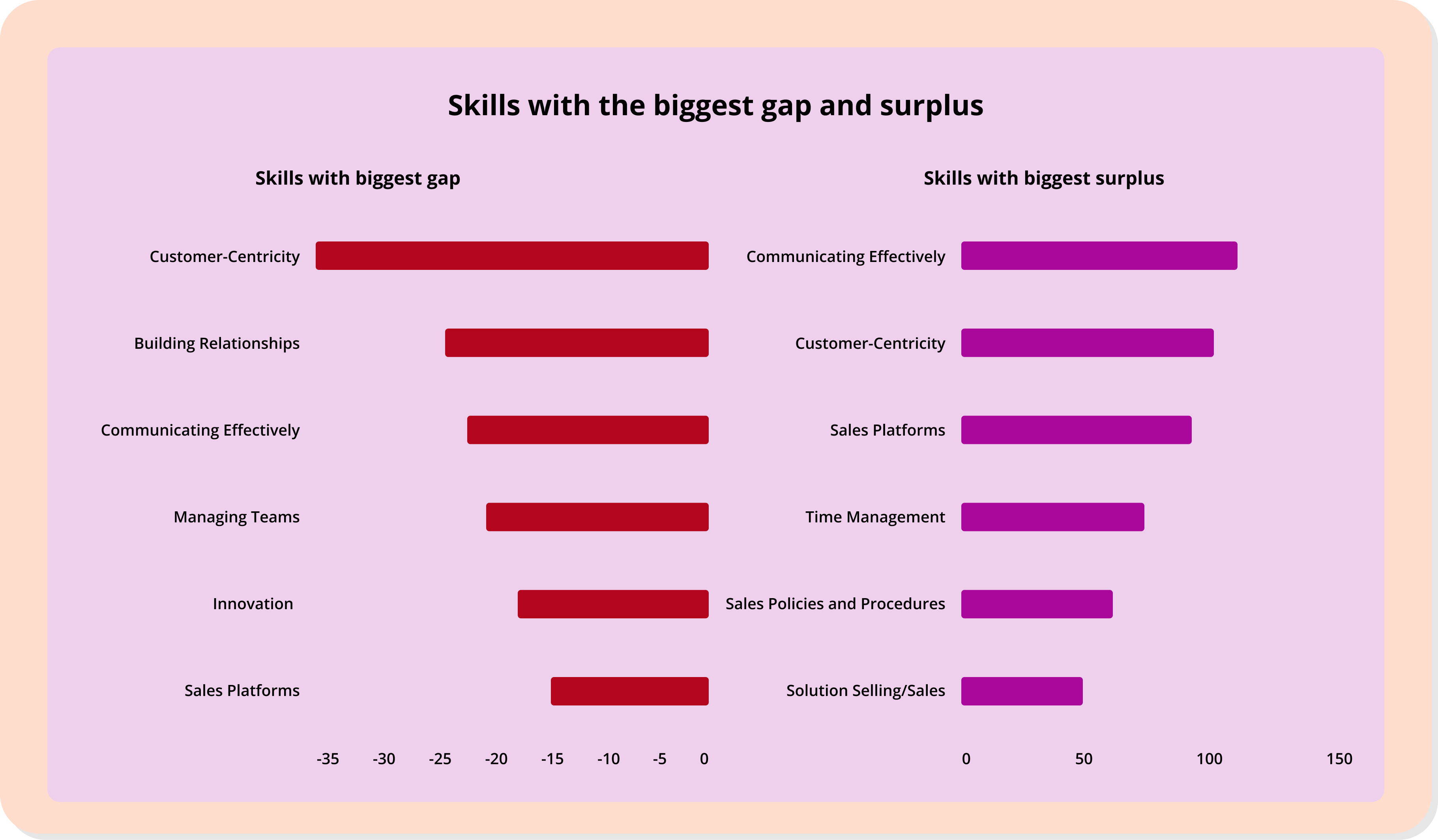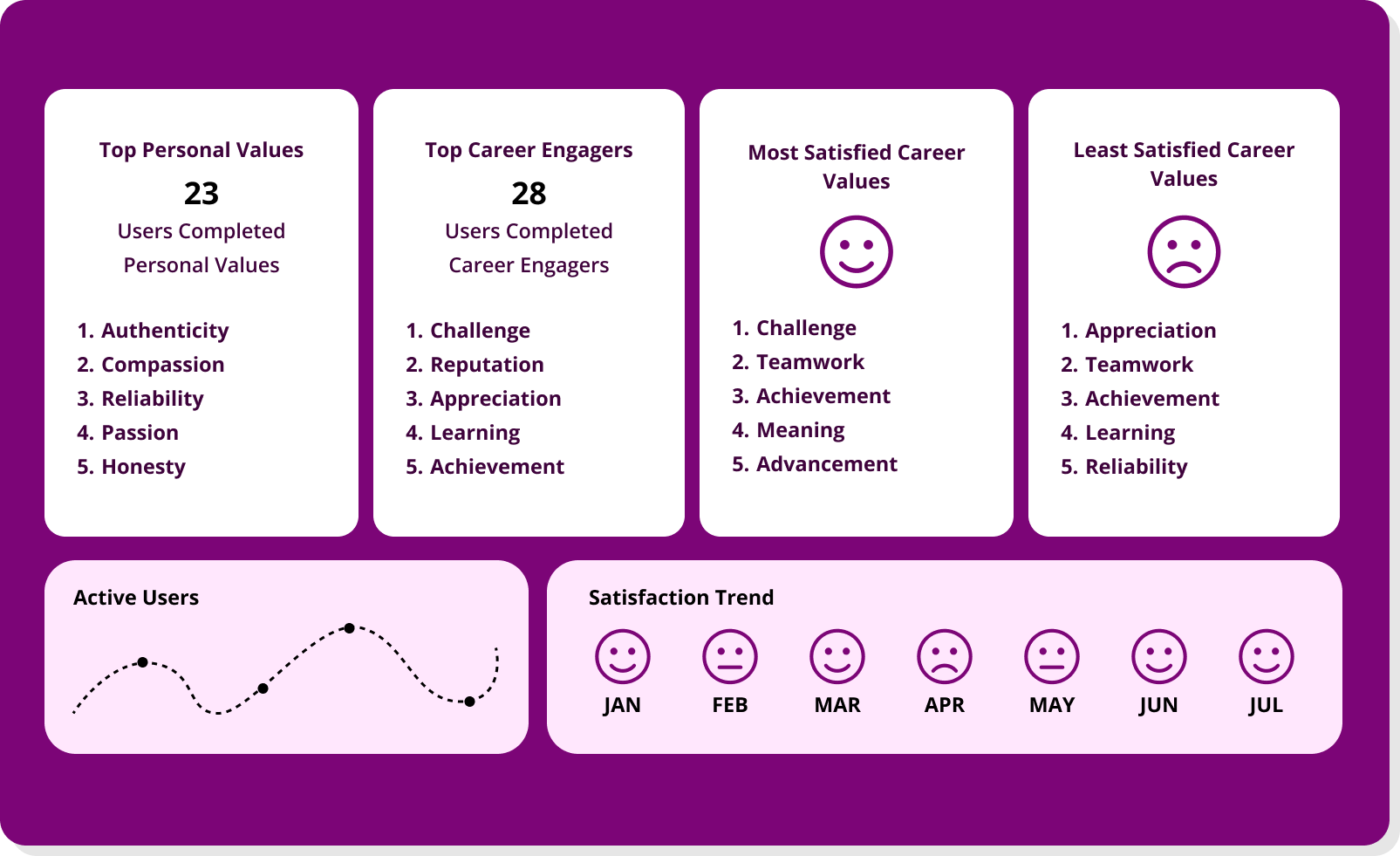Skills taxonomies are an essential part of an organization’s toolkit when it comes to powering workforce agility. By understanding what skills and capability levels exist within your organization, leaders can make informed decisions when it comes to mobilizing talent into other roles. Additionally, HR can use this information in their recruitment and L&D strategies, identifying areas where employees can upskill and move into other roles, or where they need to hire externally.
What is a skills taxonomy?
A skills taxonomy is defined by AIHR as “a structured list of skills defined at the organization level that identifies the capabilities of a business in a quantifiable way. Essentially, it is a system that classifies skills within an organization into groups and clusters. Having a skills taxonomy for your organization creates a unified understanding and language that can be used to deliver effective workforce strategies and drive operational efficiency. It is at the heart of a skills-based approach.”
We can see the benefits of a skills taxonomy, but where it falls short for today’s organizations is that it is typically a linear list with simple hierarchies. In other words, it contains titles and skills only. These can lead to messy frameworks with outdated and overlapping titles and skills. Skills taxonomies are prone to becoming duplicative and there is no DEI consideration. Furthermore, an organization’s skills taxonomy may not even include every job role, rather only the ones deemed critical to business operations and success. With the world of work evolving at a rapid pace, a simple taxonomy doesn’t do employees justice. Using an ontology will give a much broader view across your workforce.
What is a skills ontology?
A skills ontology is multi-dimensional. It is defined as “a set of skills and their relationships between one another”. Using a talent ontology gives a much fuller picture of the skills and capabilities across an organization and, depending on the hr software and systems in use, can show where an employee’s interests lie. This enables organizations and HR teams to easily identify who is ready to upskill, who needs support to move into another role, or who is willing and able take on a particular gig or project.
What is the difference between a skills ontology and a skills taxonomy?
A skills taxonomy is like a well-organized filing cabinet — it lists and categorizes the skills within your organization, creating a shared language and structure. This static, one-dimensional view is useful for consistency, but it only tells you what skills exist. It doesn’t capture how those skills relate to each other, transfer across roles, or evolve over time.
A skills ontology builds on that foundation. In fact, most ontologies contain a taxonomy as one layer — the structured list of skills — but then add multiple dimensions of intelligence. An ontology maps the relationships between skills, links them to job roles and capabilities, and connects them with competencies, experiences, and even employee interests. This creates a living network of skills that can be continuously updated as the workforce and business needs change.
It’s not an “either/or” choice. A taxonomy gives you the structure; the ontology makes it dynamic and actionable. With a taxonomy alone, you can catalog skills. With an ontology, you can uncover skill adjacencies, identify emerging capabilities, enable targeted upskilling, and plan your workforce with far greater agility.
In practice, this means:
- If you only have a taxonomy, you know what skills your organization recognizes, but you risk ending up with static, outdated, and siloed information.
- If you have an ontology, you can see how skills overlap, which ones are emerging, where employees could move based on adjacent capabilities, and how to fill gaps strategically.
- Moving from just a taxonomy to an ontology turns your skills framework from a list into a living system that directly supports internal mobility, upskilling, and workforce agility.
What are the benefits of skills taxonomy for the organization?
A well-structured skills taxonomy provides far more than just a list of job titles and abilities. It offers a unified, structured view of the skills data your workforce possesses and the skills required to achieve your organizational objectives. By aligning people’s technical skills and soft skills with business needs, skills taxonomies form the backbone of a skills based approach to talent management. Below are the key benefits organizations can expect.
1. Clear visibility into your workforce’s capabilities
One of the most immediate benefits of a skills taxonomy is gaining a single source of truth for the skills across your organization. This makes it easier to track employee skills, identify key skills critical to operations, and ensure that existing organizational skill lists remain up to date. By having a clear understanding of both specific skills and related skills, HR leaders can make informed decisions on staffing, succession planning, and workforce planning.
2. Identifying and closing skill gaps
Without a structured skills framework, it is difficult to pinpoint where skill gaps exist. A skills taxonomy helps uncover these gaps by mapping the skills needed for each role against the skills data you already have. This enables organizations to create targeted development initiatives and development programs to close skill gaps efficiently — whether those are missing technical skills, underdeveloped soft skills, or entirely new skills emerging in the market.
3. Driving a skills-based approach to talent management
A skills taxonomy is central to a skills based approach, enabling HR professionals to link people decisions to actual capabilities rather than relying on job titles alone. This can transform talent management, from the hiring process and job architecture to performance management and career paths. When combined with a skills ontology, the taxonomy becomes part of a living skills ecosystem, giving HR leaders skills insights to guide employee development and mobility strategies.
4. Enabling better workforce planning and agility
When you understand the skills required to meet future strategic goals, you can align workforce capabilities accordingly. A skills taxonomy makes it easier to organize skills across departments, group skills into broad categories, and categorize skills based on proficiency levels. This structured view supports workforce planning efforts, helping organizations respond quickly to market changes, technology shifts, or evolving skills requirements in the industry.
5. Unlocking deeper insights with skills intelligence
When paired with a skills intelligence tool or skills ontology, a skills taxonomy becomes a powerful driver of skills intelligence. It allows organizations to go beyond static lists and see how skills related to one role might transfer to another, how emerging skills are developing, and how core competencies align to business priorities. These insights help department heads and leaders design targeted professional development pathways and continuous learning initiatives that strengthen both individual careers and organizational resilience.
5 steps to build your skills taxonomy
Creating a robust skills taxonomy is not just about compiling a list of skills — it’s about building a foundation for skills intelligence, workforce agility, and a skills based approach to talent management. Here’s how to approach it in a practical, structured way.
1. Define your purpose and scope
Start by clarifying why you are creating a skills taxonomy and how it will be used. Are you focused on workforce planning, closing skill gaps, improving talent management, or supporting a skills ontology implementation? Defining your purpose will help you decide which skills required to include, which job architecture elements to map, and how deep you need to go with skill descriptions and proficiency levels.
2. Gather and audit your existing skills data
Collect skills data from multiple sources — job descriptions, performance management systems, training records, and even manager feedback. Review existing organizational skill lists to spot redundancies, outdated specific skills, or inconsistencies in naming conventions. This audit will reveal where your data is strong, where you need to organize skillsmore clearly, and where emerging skills may be missing.
3. Group and categorize skills logically
Categorize skills into broad categories (e.g., technical skills, soft skills, leadership competencies) and then break them down into sub skills where relevant. This hierarchical structure helps you group skills in a way that’s easy to search, maintain, and align to job titles or career paths. Be consistent in your naming, and ensure every entry has a clear, concise skill description.
4. Map skills to roles and organizational objectives
Connect each skill to the job roles, core competencies, and organizational objectives it supports. This skill mappingstep ensures that your taxonomy aligns with actual business needs and strategic goals. It also lays the groundwork for integration into a skills ontology, where related skills and transferable abilities can be tracked dynamically.
5. Validate, implement, and keep it up to date
Share your draft taxonomy with HR professionals, department heads, and other stakeholders to validate accuracy and completeness. Once approved, integrate it into your HR systems, skills intelligence tool, or talent management platform. Most importantly — maintain it. A skills taxonomy must evolve alongside your organization, with regular updates to reflect new skills, emerging skills, and changing skills requirements.
Why a taxonomy alone doesn’t cut it — and why real skills intelligence is the answer
A skills taxonomy is a necessary starting point, but on its own it is static. It tells you what skills exist but not how they connect, evolve, or apply to real business needs. Without the context and relational mapping provided by a skills ontologyand the automation of a skills intelligence platform, a taxonomy quickly becomes outdated, siloed, and difficult to act on.
Fuel50 Skills Intelligence transforms this static starting point into a living, connected system. It unifies your skills taxonomy with dynamic ontologies, real-time market data, AI-powered updates, and seamless integration into your talent marketplace — so skills aren’t just documented, they’re actively powering workforce agility, mobility, and development.
Here’s how Fuel50 makes that possible.
1. Unified skills architecture for a shared, actionable language
The first challenge organizations face with a traditional skills taxonomy is inconsistency. When different teams define the same skill in slightly different ways, or when titles and categories don’t match across systems, it creates confusion and slows down workforce initiatives.
Fuel50 addresses this by consolidating all your existing skill lists, job frameworks, and role profiles into a single, governed skills ontology. This means every technical skill, soft skill, and competency is described using the same definitions, grouped into the same categories, and tied to clear proficiency levels.
Under the hood, this process is powered by AI that merges duplicate entries, cleans up language, and applies market-validated skill definitions. The result is a single, unified skills architecture that becomes the shared language of the organization. Business leaders and HR professionals no longer waste time debating what a skill means — they can focus on how to use that skill data to make faster, better decisions.
2. Dynamic mapping of skills to roles, projects, and organizational objectives
In most taxonomies, skills sit in isolation from the work they enable. Fuel50 takes a different approach by mapping skills directly to the roles, projects, and organizational objectives they support (competency model). Through its Talent Blueprint™, skills are not only linked to current job descriptions but also connected to related skills and adjacent capabilities that could be developed.
Because this mapping is continuously updated through labor market data and machine learning, it reflects the reality of how work evolves over time. A skill that might have been niche last year could suddenly be in high demand, and Fuel50 ensures that shift is visible in your framework. For business leaders, this means having a live, actionable view of which skills are mission-critical, who already has them, and who could be developed into those areas with targeted learning. It makes workforce planning far more precise and reduces reliance on external hiring when internal talent can be mobilized faster.
3. AI-powered skills inventory and continuous governance
One of the biggest limitations of a static skills taxonomy is that it degrades quickly. New technologies emerge, industries change, and employee capabilities shift — but if no one is actively maintaining the list, it becomes inaccurate. Fuel50 solves this with its Skills Inventory, a governance hub where AI and human expertise work together to keep skills data fresh.
The AI automatically scans for emerging skills in the market, suggests updates to definitions, and flags duplicates or overlaps. HR administrators can then review and approve these changes, ensuring that updates are both relevant and aligned with the organization’s culture and strategy. This hybrid model avoids the trap of relying solely on either humans (too slow) or AI (potentially out of context) and ensures the taxonomy evolves in lockstep with the business. From a business perspective, it means never having to question whether your skills data is accurate when making a hiring, promotion, or redeployment decision.
4. Seamless integration with the talent marketplace for real-time action
Having an updated list of skills is valuable, but its impact is limited if it just sits in a database. Fuel50 connects its Skills Intelligence framework directly to the Talent Marketplace, making it immediately actionable.
Employees can see personalized matches to internal roles, short-term gigs, mentorship opportunities, and learning pathways — all based on their current skills, related skills, and stated career interests.
This integration means the taxonomy and ontology aren’t just tools for HR; they become part of the daily employee experience. The platform’s AI matching engine uses each person’s unique “career DNA” to surface relevant opportunities, encouraging internal mobility and reducing the likelihood of talent leaving for external roles. For organizations, this translates to lower recruitment costs, higher retention, and a more engaged workforce that can pivot quickly as priorities change.
5. Skills intelligence insights for strategic decision-making
Beyond individual matches, Fuel50 transforms skills data into a source of strategic insight. Leaders can view heatmaps showing where skill gaps exist across the organization, track which emerging skills are on the rise, and even forecast which capabilities will be needed to meet future growth plans.
These insights are enriched with external labor market analytics, allowing leaders to compare their internal capabilities against market demand. This level of visibility helps executives decide where to invest in upskilling, which roles to redesign, and where succession planning needs to be strengthened.
In effect, the taxonomy becomes more than a classification tool — it becomes a live intelligence system that guides the organization’s most important talent and business strategy decisions.



